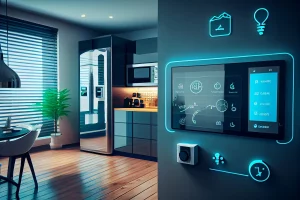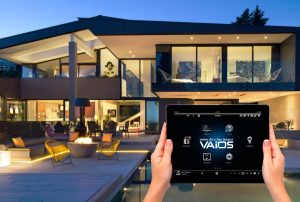
Author Introduction: Michael Johnson, a technology enthusiast and smart home expert, has spent over a decade exploring and writing about the latest advancements in home automation. With a background in electrical engineering and a passion for innovative solutions, Michael provides an in-depth look at how smart home devices are enhancing everyday living.
1. Introduction to Smart Home Technology
Smart home technology has rapidly evolved, offering a range of devices designed to make everyday living more convenient, secure, and efficient. From smart thermostats to voice-controlled assistants, these devices are transforming how we interact with our homes. This article explores the rise of smart home devices and their impact on modern life.
2. Convenience at Your Fingertips
One of the primary benefits of smart home devices is the convenience they offer. With just a few taps on a smartphone or a voice command, you can control lights, appliances, and security systems. Devices like Amazon Echo and Google Nest allow users to manage their homes effortlessly, from adjusting the thermostat to playing their favorite music.
3. Enhanced Home Security

Smart home security systems provide homeowners with peace of mind through advanced monitoring and control features. Cameras, motion sensors, and smart locks can be monitored and controlled remotely, ensuring your home is secure even when you’re away. Brands like Ring and Arlo offer comprehensive security solutions that integrate seamlessly with other smart devices.
4. Energy Efficiency and Cost Savings
Smart home devices also contribute to energy efficiency and cost savings. Smart thermostats like the Nest Learning Thermostat learn your schedule and adjust temperatures accordingly, reducing energy consumption. Smart lighting systems can be programmed to turn off when not in use, further lowering energy bills and environmental impact.
5. Improved Quality of Life
Smart home technology can enhance the quality of life by simplifying everyday tasks. Automated systems can manage household chores, such as vacuuming and lawn mowing, with devices like Roomba and Husqvarna Automaker. Additionally, smart home assistants can help manage schedules, set reminders, and provide hands-free control of various home functions.
6. Integration and Interoperability

The ability of smart home devices to integrate and work together seamlessly is a key advantage. Platforms like Apple HomeKit, Amazon Alexa, and Google Assistant allow users to connect and control multiple devices from different manufacturers. This interoperability enhances the overall smart home experience, making it more cohesive and user-friendly.
7. Customization and Personalization
Smart home devices offer a high level of customization and personalization. Users can create routines and scenes that tailor their home environment to their preferences. For example, a “Good Morning” routine might include gradually turning on lights, starting the coffee maker, and reading out the day’s news and weather.
8. Challenges and Future Prospects
Despite their benefits, smart home devices come with challenges, including concerns about privacy, security, and the need for continuous internet connectivity. However, ongoing advancements in technology and growing consumer demand are driving improvements in these areas. The future of smart home technology looks promising, with innovations like AI-driven automation and enhanced cybersecurity measures on the horizon.
Informative Table: Key Features of Popular Smart Home Devices
| Device Type | Key Features | Example Models |
| Smart Assistants | Voice control, home automation, information access | Amazon Echo, Google Nest Hub |
| Smart Security Systems | Remote monitoring, motion detection, smart locks | Ring Alarm, Arlo Pro 4 |
| Smart Thermostats | Learning schedules, remote control, energy savings | Nest Learning Thermostat, Ecobee SmartThermostat |
| Smart Lighting | Remote control, scheduling, energy efficiency | Philips Hue, LIFX |
| Smart Appliances | Automated operation, remote control, efficiency | Roomba i7, Husqvarna Automower |
Comparative Table: Traditional Homes vs. Smart Homes
| Feature | Traditional Homes | Smart Homes |
| Convenience | Manual control | Voice and app control |
| Security | Standard locks and alarms | Smart locks, cameras, remote monitoring |
| Energy Management | Manual thermostat adjustments | Smart thermostats, automated lighting |
| Household Chores | Manual vacuuming, mowing | Automated vacuum cleaners, lawn mowers |
| Integration | Standalone devices | Interconnected smart devices |
Conclusion
Smart home devices are revolutionizing everyday life by providing unprecedented levels of convenience, security, and efficiency. From managing energy consumption to enhancing home security and automating daily tasks, these technologies are reshaping how we live. As advancements continue and new innovations emerge, smart home technology will undoubtedly play an increasingly integral role in our daily lives.
This article, authored by Michael Johnson, leverages his extensive expertise in smart home technology to offer a comprehensive overview of how these devices are enhancing everyday living. Whether you’re a tech-savvy homeowner or a curious reader, this detailed analysis provides valuable insights into the transformative power of smart home devices.









